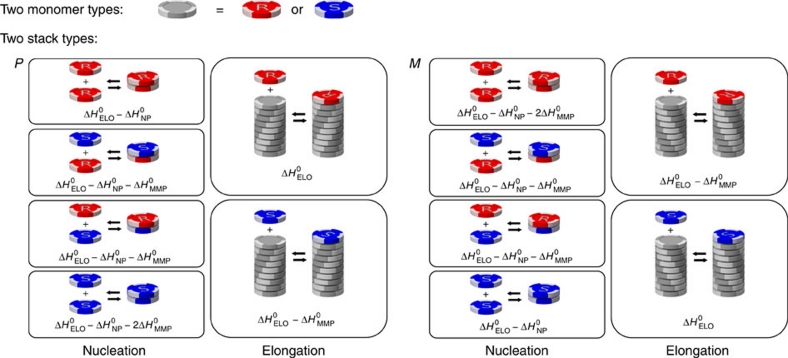Figure 2. Majority-rules reactions.
Possible reactions and corresponding enthalpy differences in the majority-rules model, where (R)-chiral (red) and (S)-chiral (blue) monomers reversibly associate into helical supramolecular copolymers with opposite helicity (P and M type). Possible reactions are the formation of P- or M-type dimers, the dissociation of existing dimmers, and the addition or dissociation of monomeric units to/from existing oligomers/polymers. The addition of chiral monomers to supramolecular polymers having their preferred helicity (that is, R-chiral monomers prefer to associate with P-type helical aggregates while S-chiral monomers prefer to associate with M-type helical aggregates) is described by an elongation enthalpy  and entropy ΔS0. The addition of chiral monomers to supramolecular polymers with the wrong handedness (that is, association of an R-chiral monomer to an M-type helical supramolecular polymer and association of an S-chiral monomer to a P-type helical supramolecular polymer) is penalized by a mismatch enthalpy
and entropy ΔS0. The addition of chiral monomers to supramolecular polymers with the wrong handedness (that is, association of an R-chiral monomer to an M-type helical supramolecular polymer and association of an S-chiral monomer to a P-type helical supramolecular polymer) is penalized by a mismatch enthalpy  . Nucleation of a new homo or heterochiral dimer of any type is penalized by a nucleation penalty
. Nucleation of a new homo or heterochiral dimer of any type is penalized by a nucleation penalty  and an additional
and an additional  for each monomer of the wrong chirality with respect to the aggregate helicity.
for each monomer of the wrong chirality with respect to the aggregate helicity.

